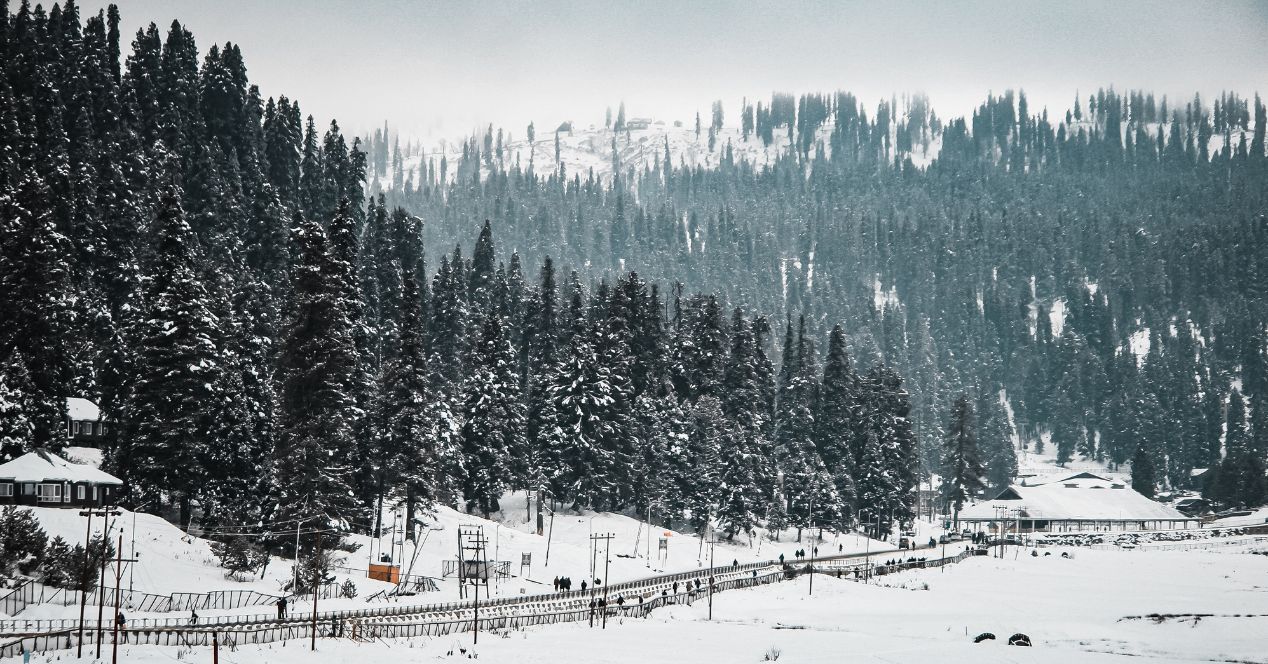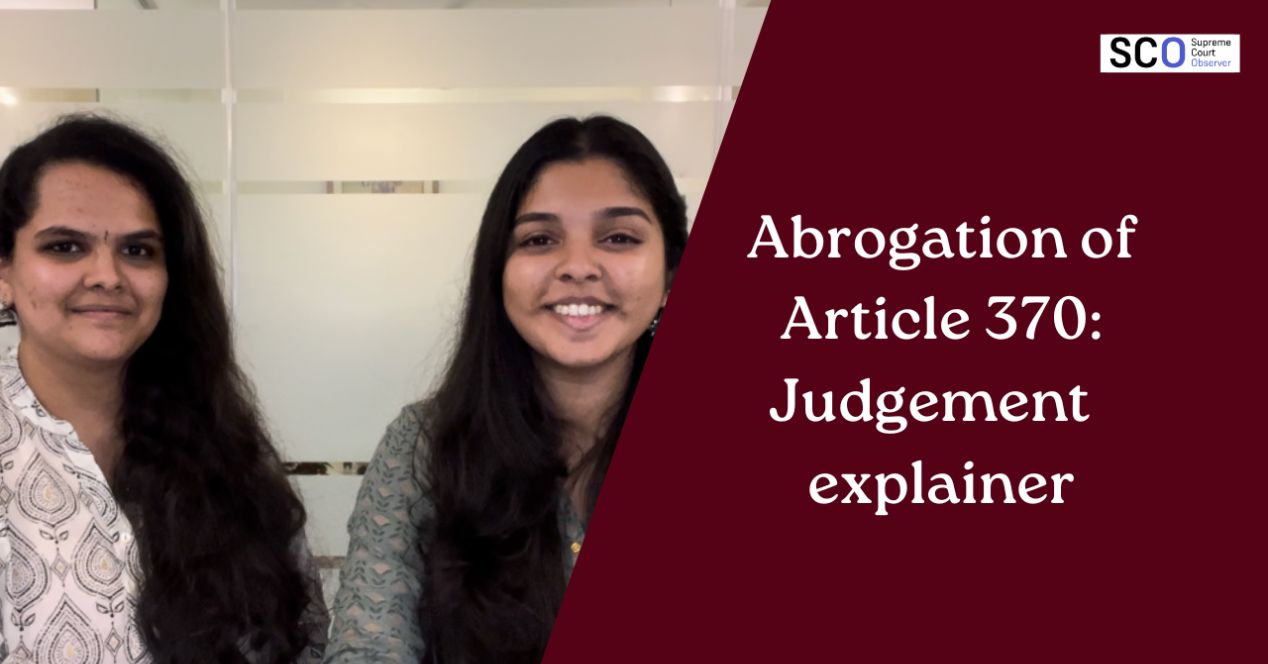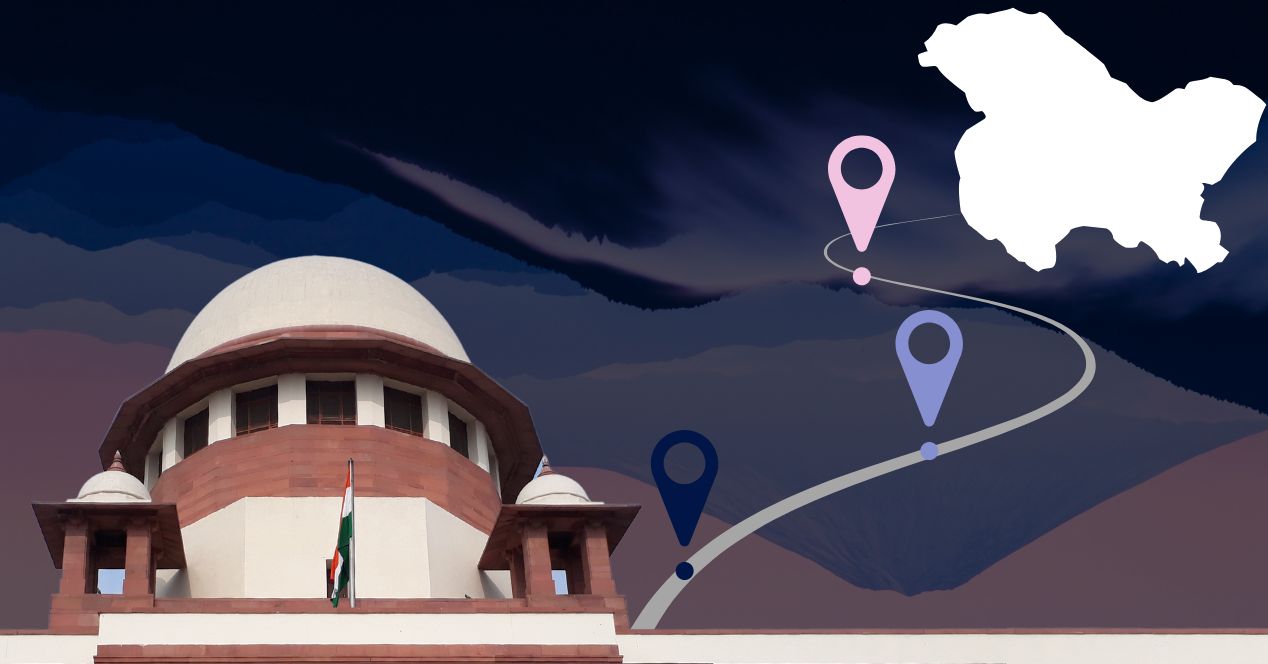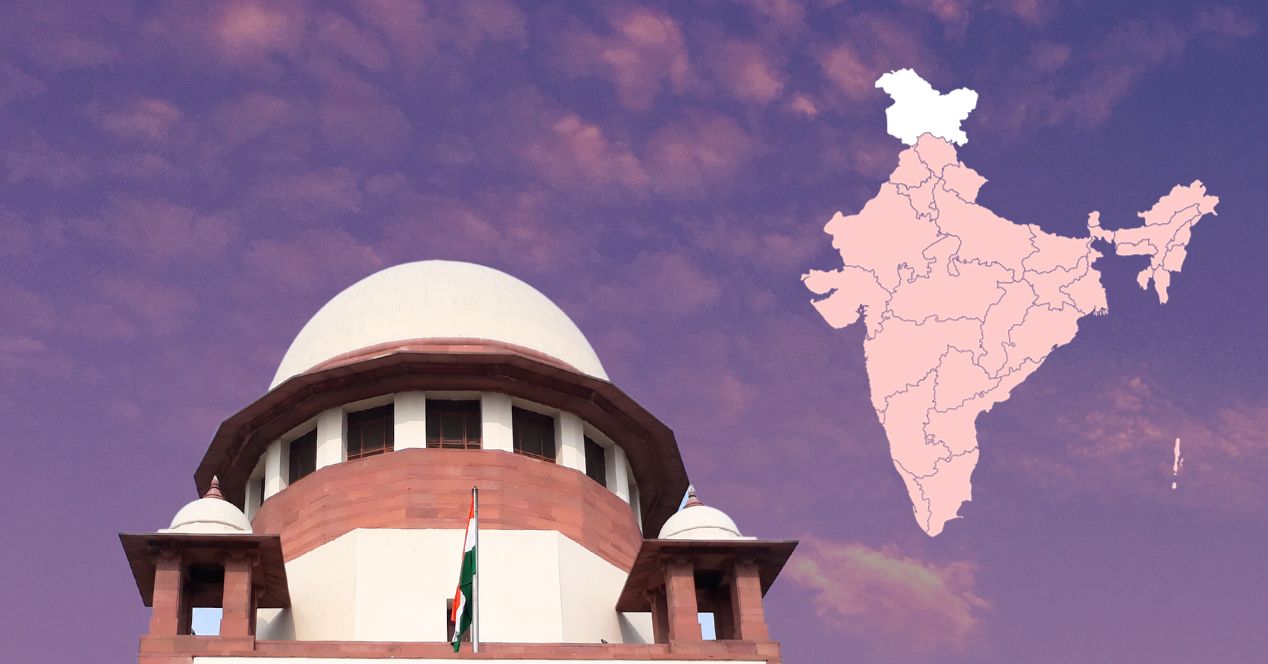Channel
“The Supreme Court has done the right thing”: Dr. M.P. Singh on Article 370
In the wake of the Supreme Court’s judgement, SCO caught up with the constitutional law expert on the past and present of the federal scheme
Dr. Mahendra Pal Singh, Professor Emeritus at the University of Delhi, is a distinguished jurist and scholar in constitutional law, administrative law and comparative law. He read for his LLM under the leading constitutional expert V.N. Shukla. He is widely known as the editor of the revised version of Shukla’s “Constitution of India”, a staple textbook in both courts and the classroom. In his prolific career, Dr. Singh has authored more than 100 papers.
Dr. Singh, who is now 83, joined us from his ancestral home in Meerut, Uttar Pradesh to talk about the Supreme Court’s recent judgement upholding the abrogation of Article 370. Here are excerpts from the interview, which have been edited for clarity:
Transcript
Chief Justice Dr. Chandrachud and his co-brother judges upheld the Union Government’s action to abrogate Article 370 which granted special status to Jammu & Kashmir. The Court, among other things, refused to comment on the constitutionality of the reorganisation of Jammu & Kashmir into two Union Territories. Of the many people who have commented once the judgement has come out, we have heard Fali S. Nariman say that this is “an incorrect appreciation of the Constitution.” So, Dr. Singh, what do you think about the Supreme Court of India brushing away the recommendation requirement in Article 370(3)? In your opinion, do you think the President has a plenary power to abrogate special status considering the Constituent Assembly of J&K ceased to exist in 1957? How do you see the current position on this?
Singh: Yeah, of course, so far as the President is concerned, it is his discretion which he has to exercise. But once he has exercised it in one way, then that is the final verdict from the side of the President of India. Therefore, that is binding. I am not quite sure whether Fali Nariman is correct in his view that only 368 had to be approached for this purpose. I think the unanimous decision of the Supreme Court is the right one.
Right. So, coming to the legal strategy employed for the abrogation. For making the whole of the Constitution applicable to J&K under 371(d), the concurrence of the government required becomes the concurrence of the Parliament because the state was in President’s Rule at that point. And we can basically see that a representative of the Union in the state was asking for the Union’s concurrence, which is the Governor here. Would you consider this strategy mala fide? Would you agree that this was kind of a fraud on the Constitution?
Singh: I don’t think there was any fraud on the Constitution. Of course, one can look at things differently because there are possibilities of different interpretations of the Constitution. But the line which the Supreme Court has adopted in this case, I think that is the right one.
The Court has said that this argument of separate sovereignty doesn’t stand. How do you see the sovereignty question?
Singh: Yes. Sovereignty has to be one for the country. And, therefore, so far as sovereignty is concerned, I think the Union of India has to establish its sovereignty over the whole of the territory of India. And to that extent, not only the territory of India, but also in the world, so far as sovereignty is concerned. Of course, the issue of sovereignty is quite complicated. But even then, going by this case, I think the exercise by the President of India is the right one.
Do you think that Article 370 could have been amended under Article 368? And why didn’t the Union take this route of going the 368 way? Is it because they don’t have an absolute majority in the Rajya Sabha?
Singh: At the moment, I’m not quite sure what 368 has to say. But so far as 368 is concerned, that could not actually change the nature of 370. 370 had to be changed in its own terms. And it is what the President of India has done.
This question of 370, I think, equally is a question in the constitutional sphere of things, but it’s a question that’s largely mired in the political reality of the times too. Previously, overturning 370 was thought of as an impossible move. But today it’s done and dusted, and we could debate the political route that was taken to do this. But the constitutional route that was adopted has been sanctioned by the Supreme Court. And you are also of the view that—completely opposite to what Mr. Nariman is saying—this route stands, right?
Singh: Yes, yes. That is what I feel. I am of the clear opinion on this point. The Supreme Court has done the right thing. There can always be different views of different persons, but I think the Supreme Court has done the right thing in the circumstances.
You have read the judgement in detail. I just wanted to know from your standpoint, what is the reasoning of the court that has been most compelling for you?
Singh: That sovereignty has to be one for the country and therefore holding two constitutions within the same country would be a difficult situation. And therefore the Supreme Court has done the right thing by holding that Article 370, the way it stands now, is the correct position so far as India is concerned.
The Supreme Court seemed to have placed a heavy reliance on how Solicitor General Tushar Mehta made an oral statement that statehood would be restored at a future date to J&K. The Court didn’t go into this whole question of the state being reduced to two Union Territories. So what do you think about this changing of statehood and how it was done?
Singh: So far as statehood is concerned, of course, states can also be in the exercise of the Union power. It can be abolished. Politically, it may not be appropriate, but we have seen that now. We have created so many states while earlier we started with only a few states. Therefore, the creation of a new state is not a problem. We can keep them as Union Territories, we can also make them as states. So as far as Leh (Editor’s Note: Singh was referring to Ladakh, of which Leh is the largest city) is concerned, it can also be created as a separate state. It is possible. I am not saying that it is always convenient to do that, but it is possible. And since they are demanding now, it is also possible to create two states rather than one state of Jammu and Kashmir, as it was before.
Looking at the symmetric federalism we have in this country, do you think that the federal scheme has been violated or has been forever altered by this judgement?
Singh: Judgements are actually in some ways individual. And so far as Jammu and Kashmir is concerned, it was a unique provision under the Constitution, which doesn’t apply so far as other states are concerned and therefore a kind of a new approach had to be adopted for the purpose of bringing them in line with the rest of the Constitution.
What does this mean for various movements across India, where there are special provisions and we have made special accommodations to states. They have separate powers and protections under the Constitution. But now it seems like all these movements we’ve kept at abeyance because of constitutional guarantees could start stirring again. Do you think that every state would be looking at this judgement in a very anxious way?
Singh: No, but going by Article 1, clause 1: India, that is Bharat, is a Union of States. I think it is a fundamental article of the Constitution. It would be considered an inviolable article so far as clause 1 of Article 1 is concerned. Therefore, states have to remain there. The only question is whether some of these states can be merged and all that, and that procedure is provided in Articles 3 and 4 of the Constitution. And so long as that procedure is followed in its word and spirit, then the action of the Union of India or of the President of India is the right one. My opinion.
I want to zoom out a bit here to ask. What about basic structure? Do you think it is still relevant 50 years after the Kesavananda Bharati judgement came out? Do we still have to look at basic structure in constitutional litigation today?
Singh: Dr. Conard (Dietrich), my colleague and mentor, actually started the idea of basic structure in India by giving a lecture in 1965 at Banaras University. And that lecture actually became a foundation for argument in one of our cases, the last case which Subba Rao decided, the Golaknath case. And in Golaknath, though not so openly, these arguments were observed. And though Golaknath was not decided entirely on the idea of basic structure, the basic structure was finally established only in that, well, sanyasi case…
Kesavananda Bharati.
Singh: Yes. Kesavananda Bharati .
Going a bit to the emergency provisions here, what can and what can’t the Union do when a state is under President’s Rule? We have been talking about what Gautam Bhatia has written about two kinds of irreversible actions. One, a permanent action like damming the river, and one a constitutional action. And the Union can complete the physical irreversible action, but it mustn’t do anything to disturb the constitutional arrangement between the Union and the states. What are your thoughts on that?
Singh: Once a state is created, it is affected by Article 246 of the Constitution. Accordingly, these states have certain powers under the Constitution to make laws on the Concurrent List as well as on the State List. And definitely the Union law on the Concurrent List will prevail, but on a State List, definitely, so far as state laws are concerned, they will prevail. And this is how a balance is drawn in the Centre-state and state relationship.
There is also this expansive reading of the President’s power under Article 356 that we think gives unfettered control to the Union. Is there a Union-friendly, centralistic view that comes across through this judgement?
Singh: Yeah. 355 actually makes or empowers the Central Government or the Union government to ensure that the states are protected against any kind of venture by which they can be destroyed. Therefore the Union government can come for the protection of the state and the steps that can be taken are already provided in 255 (Editor’s note: This was a slip of tongue. Singh meant Article 355, and not Article 255). But then 356 is very specific in this regard as to what the Union can do. It can temporarily take over the state and run it. But not forever. You cannot destroy the states under Article 356. You can only control them for some time and that is what it says. And that is for the protection of the states themselves because 355 very clearly says so.
When the Constitution was framed, how was this concept of federalism and Ambedkar’s idea of empowering the states put into place? How should we place this judgement, from the point of view of history? And how can it change things in the future?
Singh: Yeah, there is no doubt. I have read some of the dissertations even from Kashmiri people that there is no doubt that certain matters were uncertain so far as Jammu and Kashmir was concerned. But that uncertainty was removed in course of time. And finally, I think the government has taken advantage of that change of minds that—now, they are thinking, we should bring the state of Jammu and Kashmir in line with the rest of the states. It should not look as if it is a country of two states at the same time—Jammu and Kashmir on the one side and the rest of India on the other side. This could not be envisaged forever.
I wanted to ask this question at the start. Did this judgement surprise you or was this something you expected and were looking forward to?
Singh: It’s very difficult to say because you never know how the judges perceive a particular situation. But the expectation was that the Supreme Court will not create fresh problems for the Union of India. And by endorsing its decision, it has actually solved or, in a way, protected the Union of India from the troubles which could have arisen if the judgement was any different.
In an earlier conversation, you mentioned to me that this Constitution has never come in the way of running this country. That Nehru could have conducted a nation-building exercise under it, Indira could exercise an emergency power under it, and today the Union government can run it the way that it wants. I just wanted to bring that up before we close this conversation. Did you have anything to add to that comment of yours?
Singh: Yes. We have to ensure that the Constitution functions in terms of the ideal constitutions in the rest of the world. But there may be special situations in each country. For example, the kind of problems in respect of the tribals and the Backward Classes we had in this country. Not every country had that kind of problem. And therefore, there are certain things which had to be peculiar to the Constitution of India. And that is how it became so lengthy. It continues to remain the lengthiest constitution in the world. Despite the fact that many of the constitutions have tried to compare with the Constitution of India, they remain far behind it. So, the length was relevant so far as India is concerned. And it might be creating some problems sometimes, but I think by and large, it has functioned well so far.
Thank you. Let’s end the conversation on that note. And thank you so much for joining us.
Singh: Thank you so much for inviting me, though I am now in a village situation where I don’t read much law. So thank you so much.




